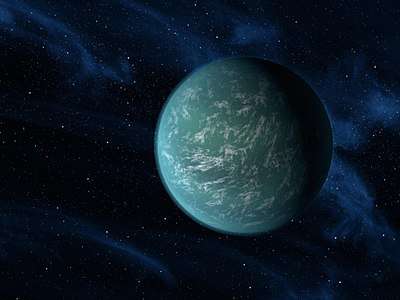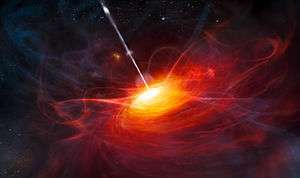GRB 111209A
GRB 111209A is the longest lasting gamma-ray burst (GRB) detected by the Swift Gamma-Ray Burst Mission, observed on December 9, 2011.[1] Its duration is longer than 7 hours, implying this event has a different kind of progenitor than normal long GRBs. It was first proposed that the progenitor of this event was a blue supergiant star with low metallicity. Later, it has also been proposed that this event is the prototype of a new class of GRBs, ultra-long GRBs.
| Other designations | GRB 111209A, SN 2011kl |
|---|---|
| Event type | Gamma-ray burst, supernova |
| Spectral class | SNSLSN |
| Date | 9 December 2011 |
| Duration | at least 7 hours |
| Instrument | Neil Gehrels Swift Observatory |
| Constellation | Phoenix |
| Right ascension | 00h 57m 22.63s |
| Declination | −46° 48′ 03.8″ |
| Redshift | 0.677 ±0.001 |
The GRB was associated with the magnetar-powered supernova 2011kl, an object of intermediate luminosity between conventional GRB supernovae and superluminous supernovae[2]
References
- Gendre, B.; Stratta, G.; Atteia, J. L.; Basa, S.; Boër, M.; Coward, D. M.; Cutini, S.; D'Elia, V.; Howell, E. J.; Klotz, A.; Piro, L. (2013). "The Ultra-long Gamma-Ray Burst 111209A: The Collapse of a Blue Supergiant?". Astrophysical Journal. 766 (1): 30. arXiv:1212.2392. Bibcode:2013ApJ...766...30G. doi:10.1088/0004-637X/766/1/30.
- Greiner, J.; et al. (2015). "A very luminous magnetar-powered supernova associated with an ultra-long γ-ray burst". Nature. 523 (7559): 189–192. arXiv:1509.03279. Bibcode:2015Natur.523..189G. doi:10.1038/nature14579. PMID 26156372.
| Preceded by GRB 060218 |
Longest gamma-ray burst 2011 – |
Succeeded by current |
This article is issued from Wikipedia. The text is licensed under Creative Commons - Attribution - Sharealike. Additional terms may apply for the media files.


.jpg)